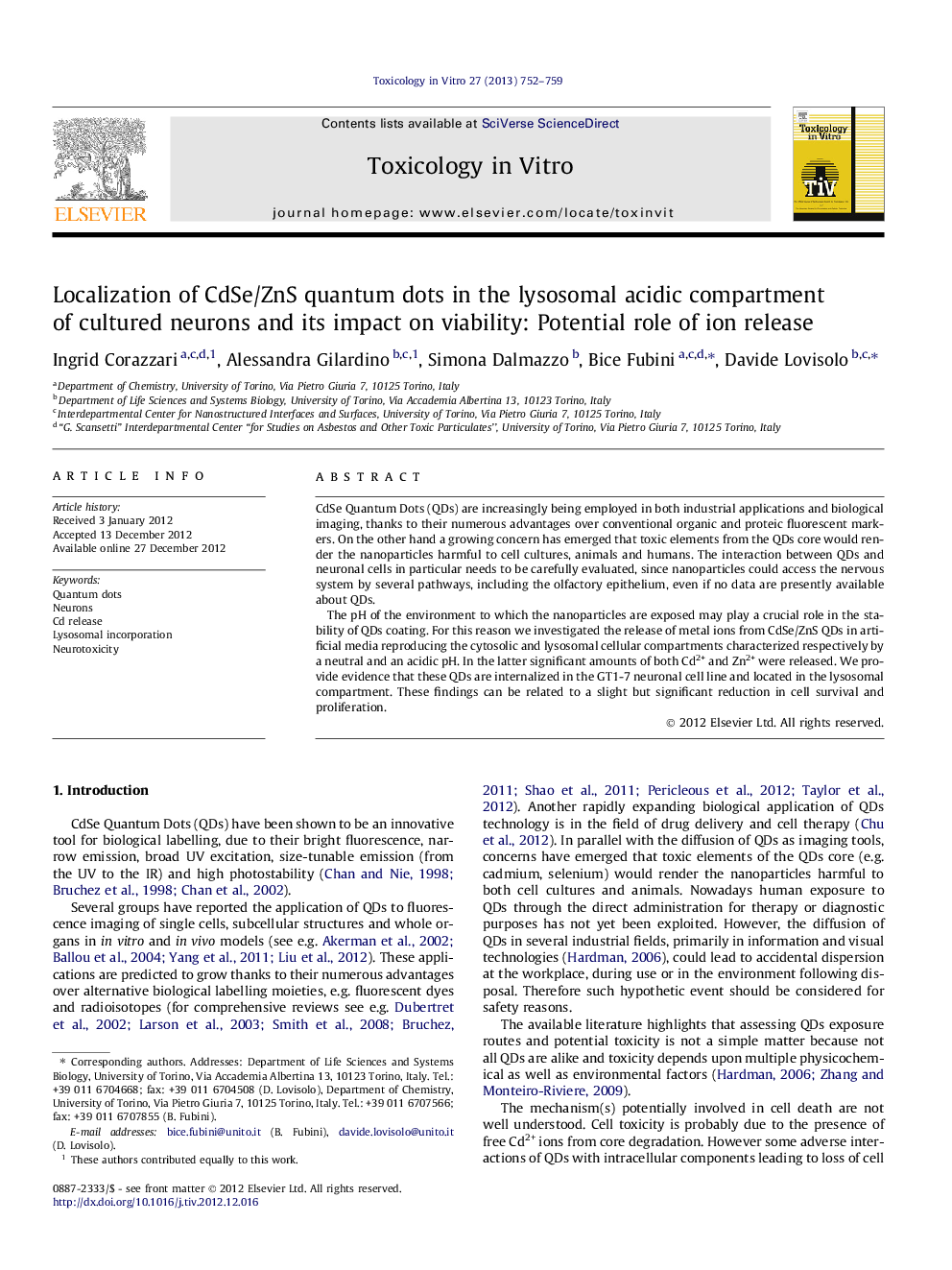| Article ID | Journal | Published Year | Pages | File Type |
|---|---|---|---|---|
| 5862459 | Toxicology in Vitro | 2013 | 8 Pages |
CdSe Quantum Dots (QDs) are increasingly being employed in both industrial applications and biological imaging, thanks to their numerous advantages over conventional organic and proteic fluorescent markers. On the other hand a growing concern has emerged that toxic elements from the QDs core would render the nanoparticles harmful to cell cultures, animals and humans. The interaction between QDs and neuronal cells in particular needs to be carefully evaluated, since nanoparticles could access the nervous system by several pathways, including the olfactory epithelium, even if no data are presently available about QDs.The pH of the environment to which the nanoparticles are exposed may play a crucial role in the stability of QDs coating. For this reason we investigated the release of metal ions from CdSe/ZnS QDs in artificial media reproducing the cytosolic and lysosomal cellular compartments characterized respectively by a neutral and an acidic pH. In the latter significant amounts of both Cd2+ and Zn2+ were released. We provide evidence that these QDs are internalized in the GT1-7 neuronal cell line and located in the lysosomal compartment. These findings can be related to a slight but significant reduction in cell survival and proliferation.
⺠Non-functionalized CdSe/ZnS QDs can be stably incorporated into neuronal cells. ⺠QDs localize only in a limited fraction of the whole lysosomal compartment. ⺠QDs CdSe/ZnS release metal ions in acidic milieu. ⺠Lack of gross cytotoxic effect observed.
